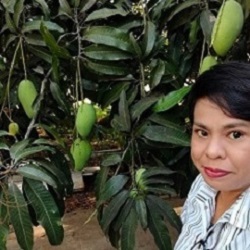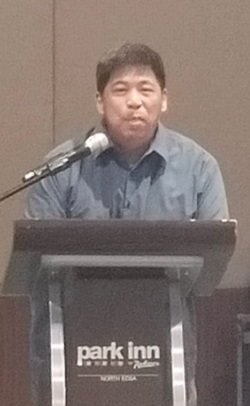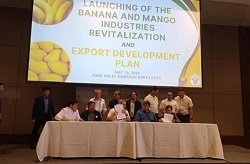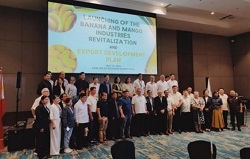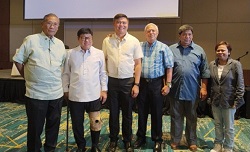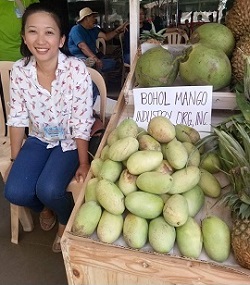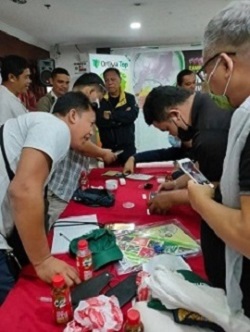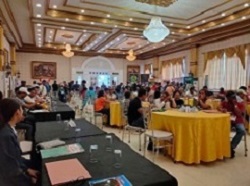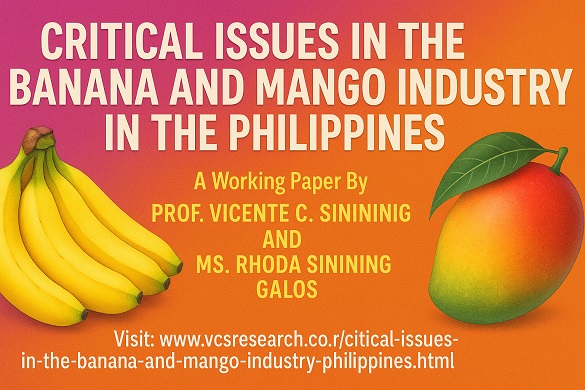
Overview
The banana and mango industries in the Philippines are vital contributors to the country's agricultural exports and rural livelihoods. However, these sectors face a multitude of challenges, ranging from environmental pressures to market and institutional inefficiencies. For both commodities, the most pressing issues include climate-related risks, pest and disease outbreaks, limited value chain integration, insufficient R&D investment, and policy fragmentation. Furthermore, global competition and trade barriers exacerbate the vulnerability of smallholder farmers, who make up the majority of producers.
Critical Issues Facing the Banana and Mango Industries
🍌 Banana Industry
- Pest and Disease Outbreaks: The Panama disease (Fusarium wilt Tropical Race 4 or TR4) has severely impacted banana plantations, particularly Cavendish varieties destined for export. This soil-borne pathogen is difficult to control and has already led to losses amounting to billions of pesos annually (Ploetz, 2015).
- Climate Change Impacts: Erratic rainfall and typhoons have disrupted banana production, damaging plantations and logistics networks (Espaldon et al., 2020).
- Export Dependence and Market Barriers: Heavy reliance on export markets such as China and Japan makes the industry vulnerable to diplomatic and phytosanitary disputes (Sarmiento, 2021).
- Land Tenure and Farm Fragmentation: The small scale of banana farms and tenure insecurity hinder investment in long-term plantation management (Gomez & Peralta, 2019).
- Labor Issues and Certification Costs: Global buyers demand labor and environmental certifications, which impose high compliance costs on producers (Padilla et al., 2020).
🥭 Mango Industry
- Pest Infestation and Disease Control: The mango pulp weevil and fruit fly infestations have undermined the quality of produce and export viability (Go, 2024).
- Low Farmer Incomes and Aging Trees: A large share of mango farmers own aging trees with declining yields and lack resources for orchard rejuvenation (DOST-PCAARRD, 2020).
- Seasonality and Supply Volatility: A narrow harvest window leads to glut and low prices during peak season, followed by scarcity and high prices off-season (Torres et al., 2018).
- Weak Value Chain Linkages: Mango value chains remain disjointed, with limited coordination between producers, processors, and exporters (Go, 2024).
- Limited Research and Extension Support: Technology adoption is hindered by a lack of tailored R&D and insufficient extension outreach to remote areas (BAS, 2020).
Recommendations for Mitigation
For Both Industries:
- Integrated Pest Management (IPM) and biocontrol solutions must be scaled up with support from government and international partners.
- Climate-resilient cultivars and crop diversification programs should be prioritized.
- Establish geographic clusters and cooperatives to enhance economies of scale and collective marketing.
Specific to Banana:
- Accelerate R&D for Panama disease-resistant banana strains, particularly for export-quality Cavendish.
- Negotiate long-term trade agreements with buyer countries to mitigate diplomatic risks.
- Develop digital traceability systems to support certification and compliance efforts.
Specific to Mango:
- Invest in post-harvest facilities and cold storage infrastructure to reduce spoilage.
- Promote value-added processing (e.g., dried mango, puree) to stabilize farmer incomes.
- Rejuvenate mango orchards via government-subsidized grafting and replanting programs.
References:
- DOST-PCAARRD. (2020). Mango industry strategic plan. Department of Science and Technology – Philippine Council for Agriculture, Aquatic and Natural Resources Research and Development.
- Espaldon, M. V. O., et al. (2020). Climate variability and agriculture: Impacts and adaptation in banana production in Mindanao, Philippines. Journal of Environmental Science and Management, 23(2), 56–70. https://doi.org/10.47125/jesam/2020_2/06
- Go, K. C. (2024). Developments in Agro-food Business Industries: Mapping the Philippine Mango Industry's Value Chain and Innovation System Interactions. Archium Ateneo. Link
- Gomez, E., & Peralta, M. (2019). Land tenure and investment dynamics in Philippine banana production. Asian Journal of Agriculture and Development, 16(1), 22–40.
- Padilla, J. E., et al. (2020). Social certification and labor rights in the banana export sector. Philippine Journal of Labor Studies, 24(1), 39–52.
- Ploetz, R. C. (2015). Management of Fusarium wilt of banana: A review with special reference to tropical race 4. Crop Protection, 73, 7–15. https://doi.org/10.1016/j.cropro.2015.01.007
- Sarmiento, C. (2021). Navigating geopolitics in banana exports: The case of the Philippines. Asia Pacific Economic Review, 18(2), 115–132.
- Torres, E., et al. (2018). Seasonal supply management in mango markets: Lessons from Luzon farmers. Philippine Agricultural Economist Journal, 22(2), 66–81.
